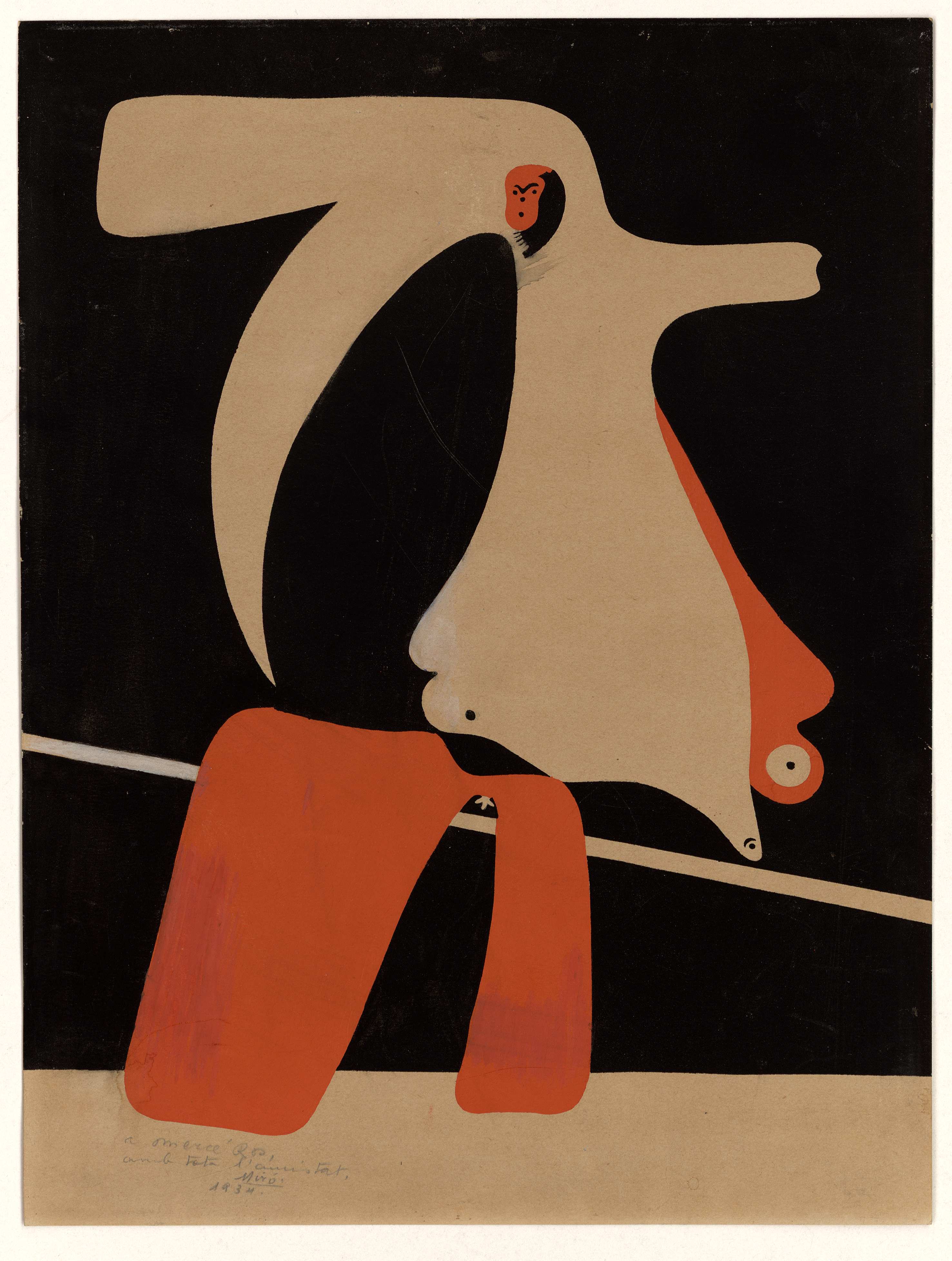
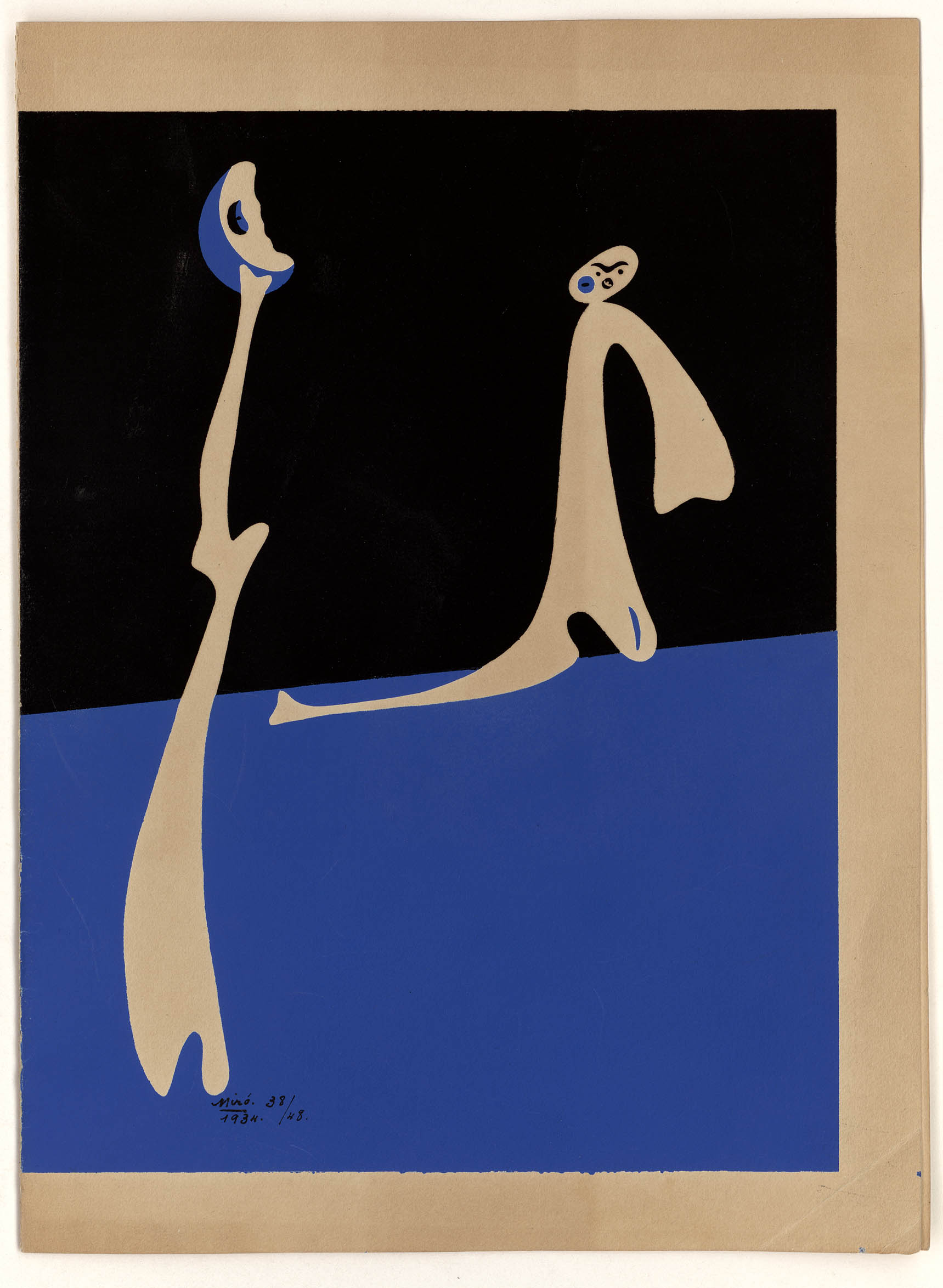
Observe
What technique did Joan Miró use?
Miró used the pochoir printmaking technique - pochoir is the French word for stencil - which involves applying colour manually with a cardboard or zinc stencil and allows you to make several copies. The artist took zinc sheets, one for each shape and colour, and cut them out to make stencils, leaving an empty space in the part he wanted to fill with colour. Joan Miró used this technique to design the cover for the magazine D'Ací i d'Allà, and the piece became one of the iconic examples of his collaboration with the ADLAN group.
Look at the works
Miró only used three colours for each piece. The white part we see is the colour of the paper.
Each shape is the result of laying down a stencil with the cut-out shape on a specific part of the paper. Next, Miró applied colour (black, red, or blue) with a roller, which covered the paper through the cut-out area.
Each shape is independent, and together they create the composition.
How many figures do you see in the first piece? And in the second? What parts of the figures do you recognize?
Would you say the scenes happen indoors (in a room, for example) or outdoors?
The two scenes are framed in white, but do you think any one of the figures doesn't feel comfortable and wants to escape from its space?
Had you realized that Miró used a technique - stencil - that some graffiti artists use today? Graffiti artists usually apply colour with spray paint.
In some prehistoric caves we find outlines of human hands. The people who made them placed their open hands on the wall and surrounded them with colour by blowing pigment through a hollow reed. When they lifted their hands, the shapes remained, with the powdered colour around them.
Every piece tells a story. What stories do you think Miró is telling us here?
Miró made these two illustrations in 1934 for a French magazine called Cahiers d'art ("art notebooks"). He did not give them titles.
A pochoir exhibition at home
Coinciding with the exhibition Miró-ADLAN. An Archive of Modernity (1932-1936), we want to offer you a special Creative Families activity based on the works that Miró made with a pochoir or stencil technique. We also encourage you to set up your own little exhibition at home (in the entrance, the dining room or in a bedroom, for example), design an invitation, and invite whoever you want to come and see it.
You will need thick card paper or rigid cardboard (cardboard will be harder to cut).
1. Make the stencils. Draw shapes and cut them out. Remember that the part you'll be using isn't the full part, but the empty one: the negative. If you want to, you can cut out more than one shape on the same stencil. Discard the shape you cut out and keep the sheet from which you cut it.
[Tip for doing it neatly: make a straight cut from the outer edge of the sheet to the drawing, and then cut carefully following the pencil outline. When you finish, you can cover up the first cut with a bit of masking tape.]
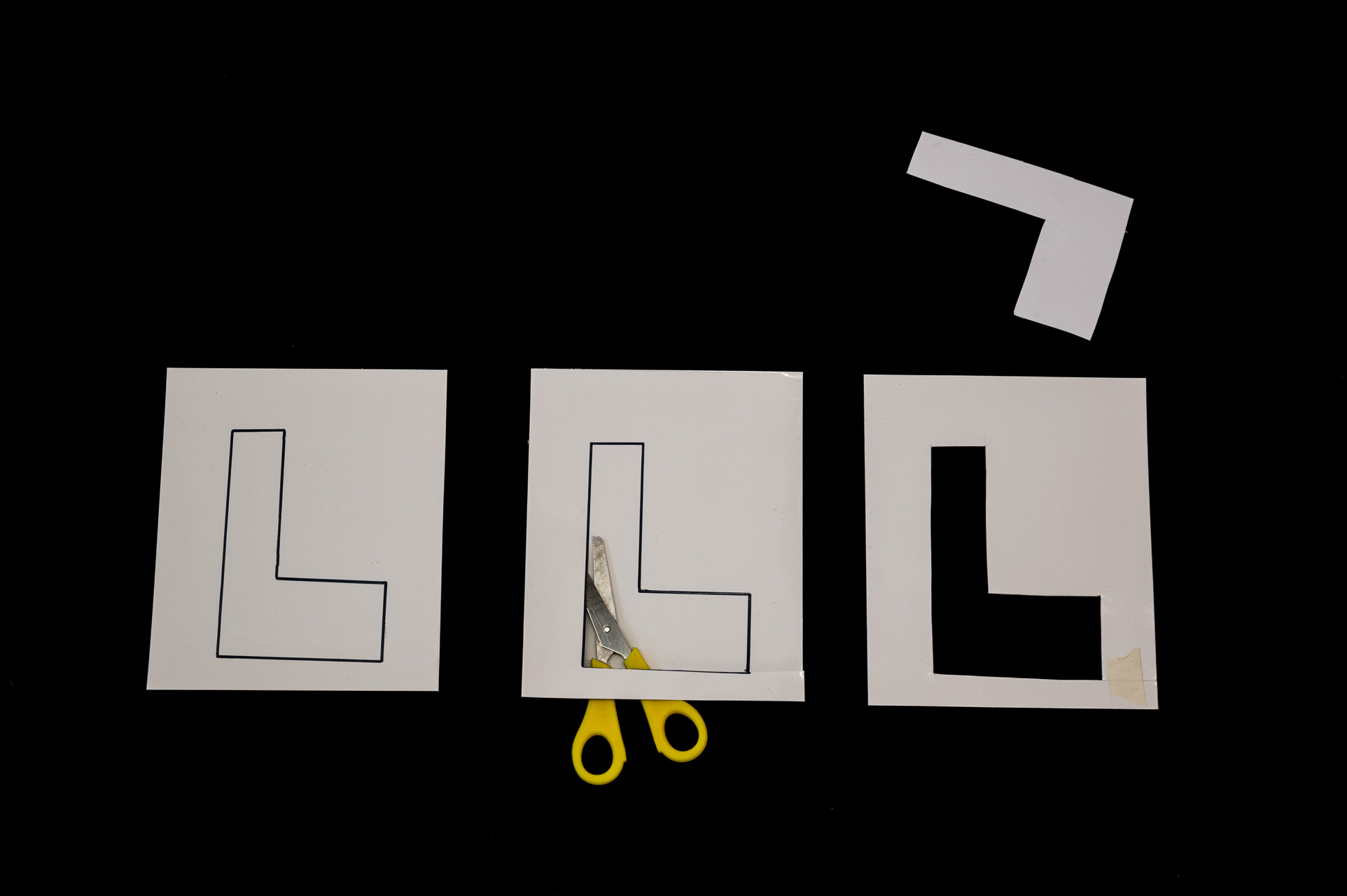
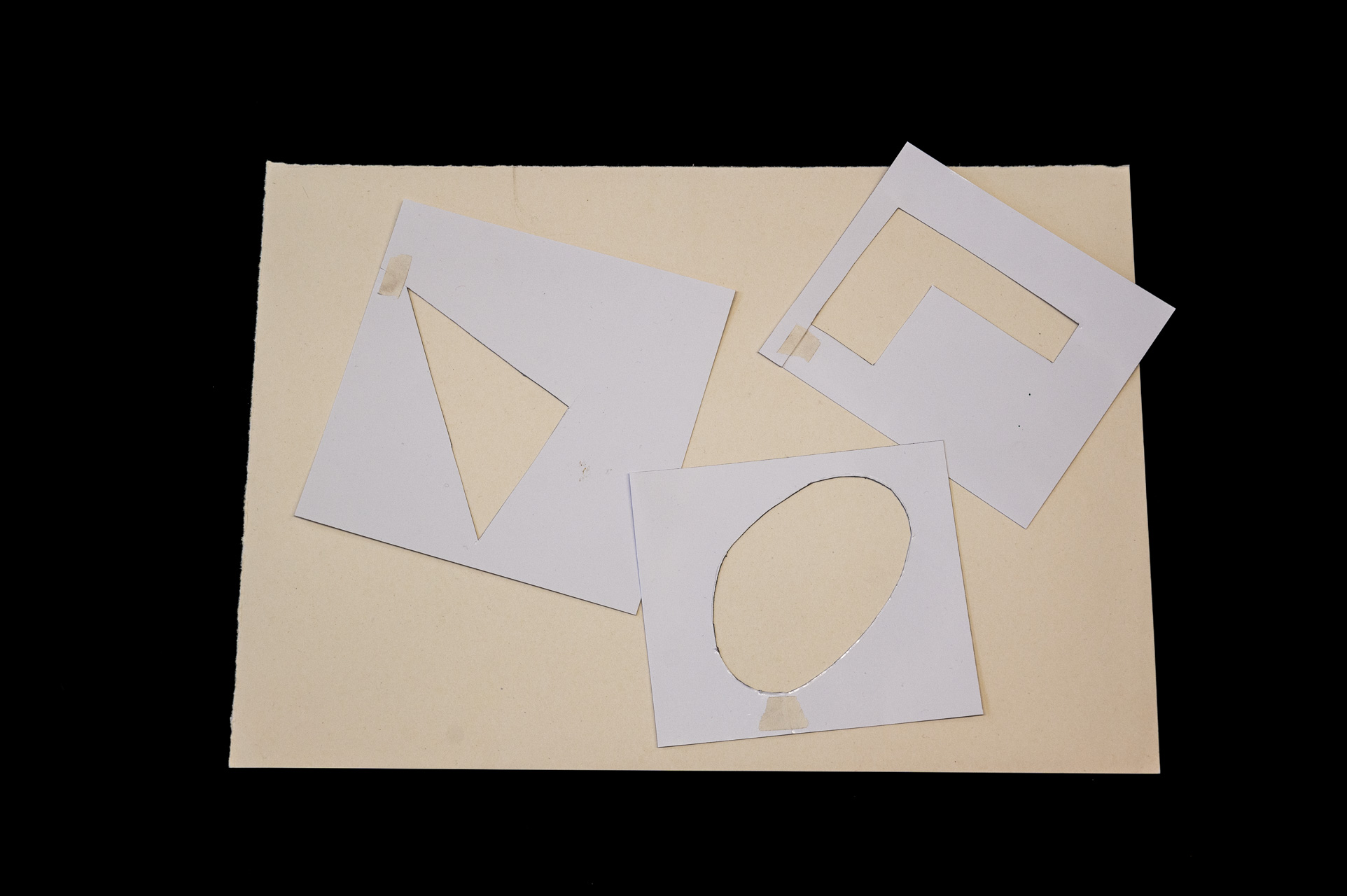
2. Take rollers and colours, one roller for each colour. Always use the same roller for each specific colour.
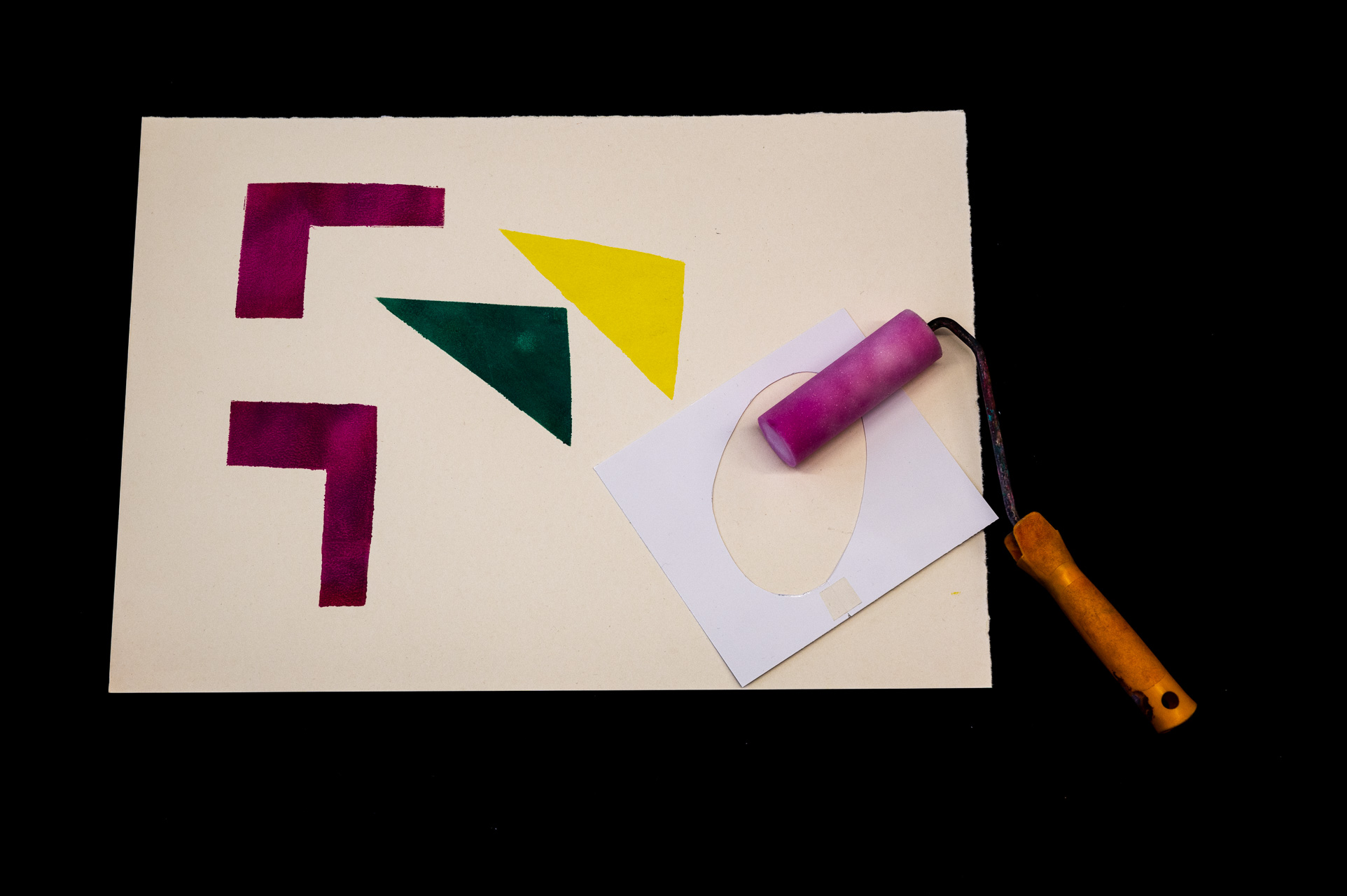
3. Lay a sheet of sturdy paper down on the table. Try combining different shapes with the stencils until you find one you like. Now you're ready to colour it in! Before you apply each colour, make sure the one you used before has had time to dry.
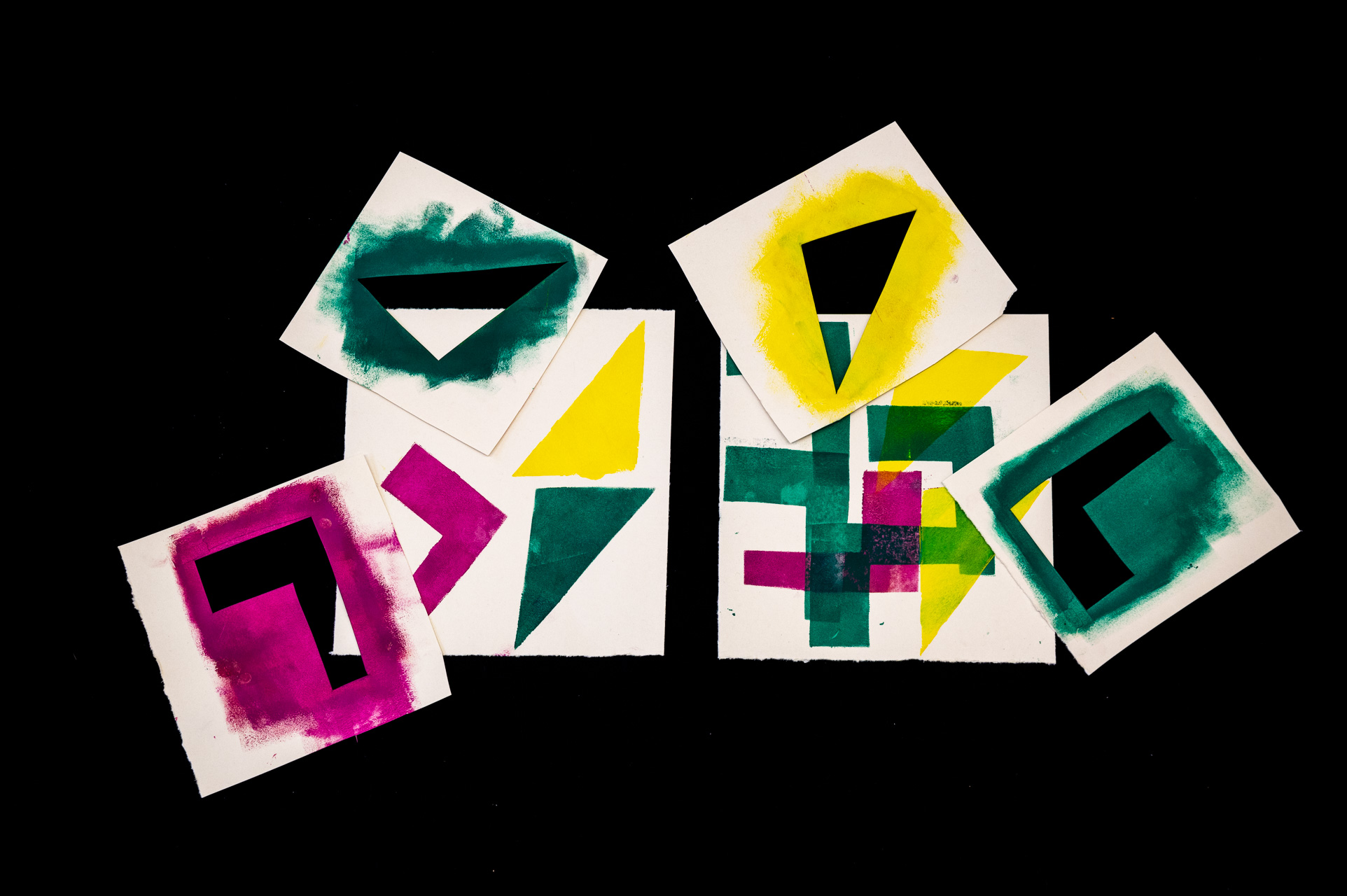
4. Take more sheets of paper and make different compositions with the same shapes. You don't have to use the same colours unless you want to.
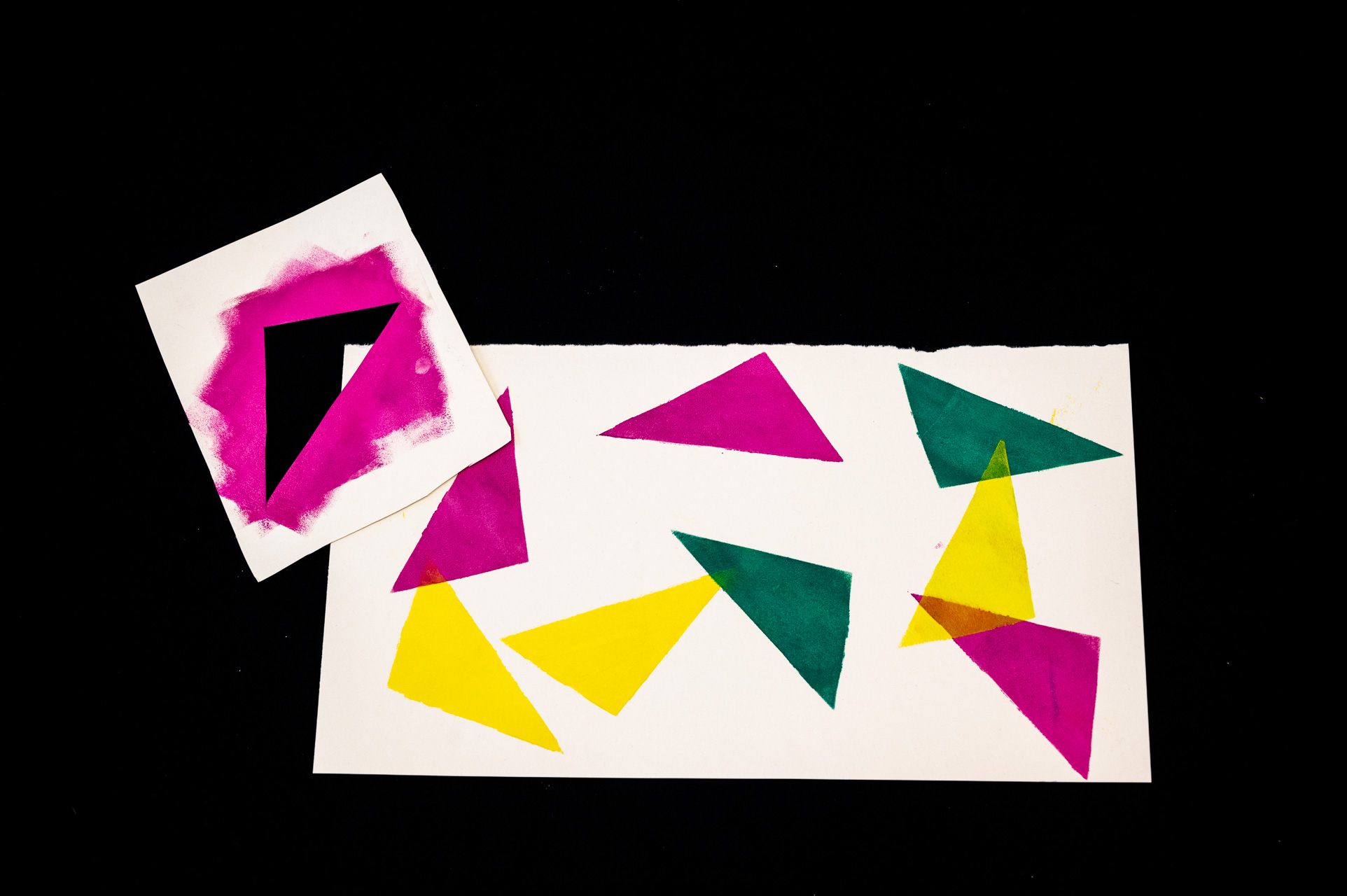
5. Think of a place in your home where you would like to display your pieces. You don't have to hang them on the wall or frame them; you can simply spread them out on the floor or on a table, or place them on a shelf or on a piece of furniture, propped up against the wall.
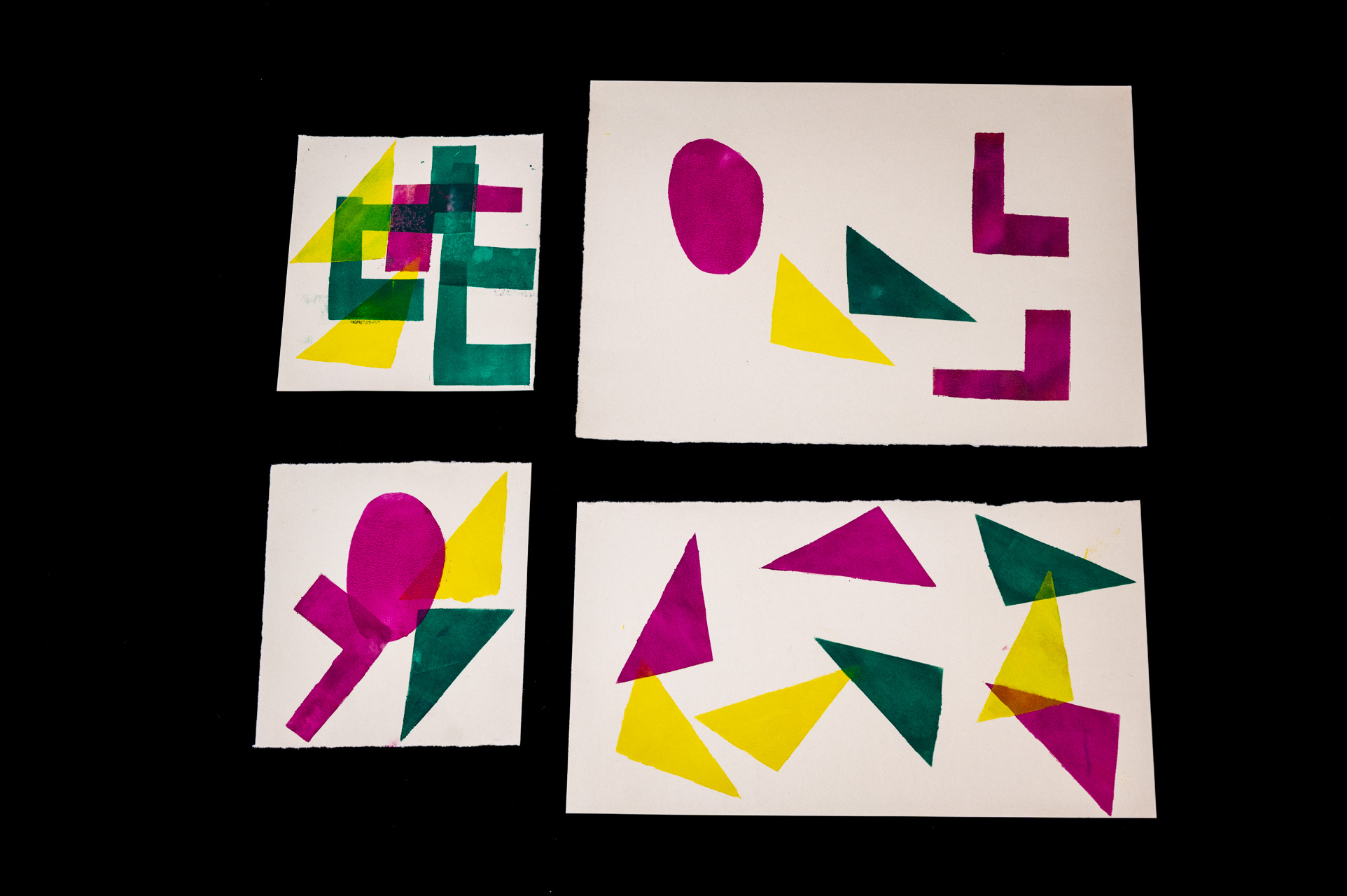
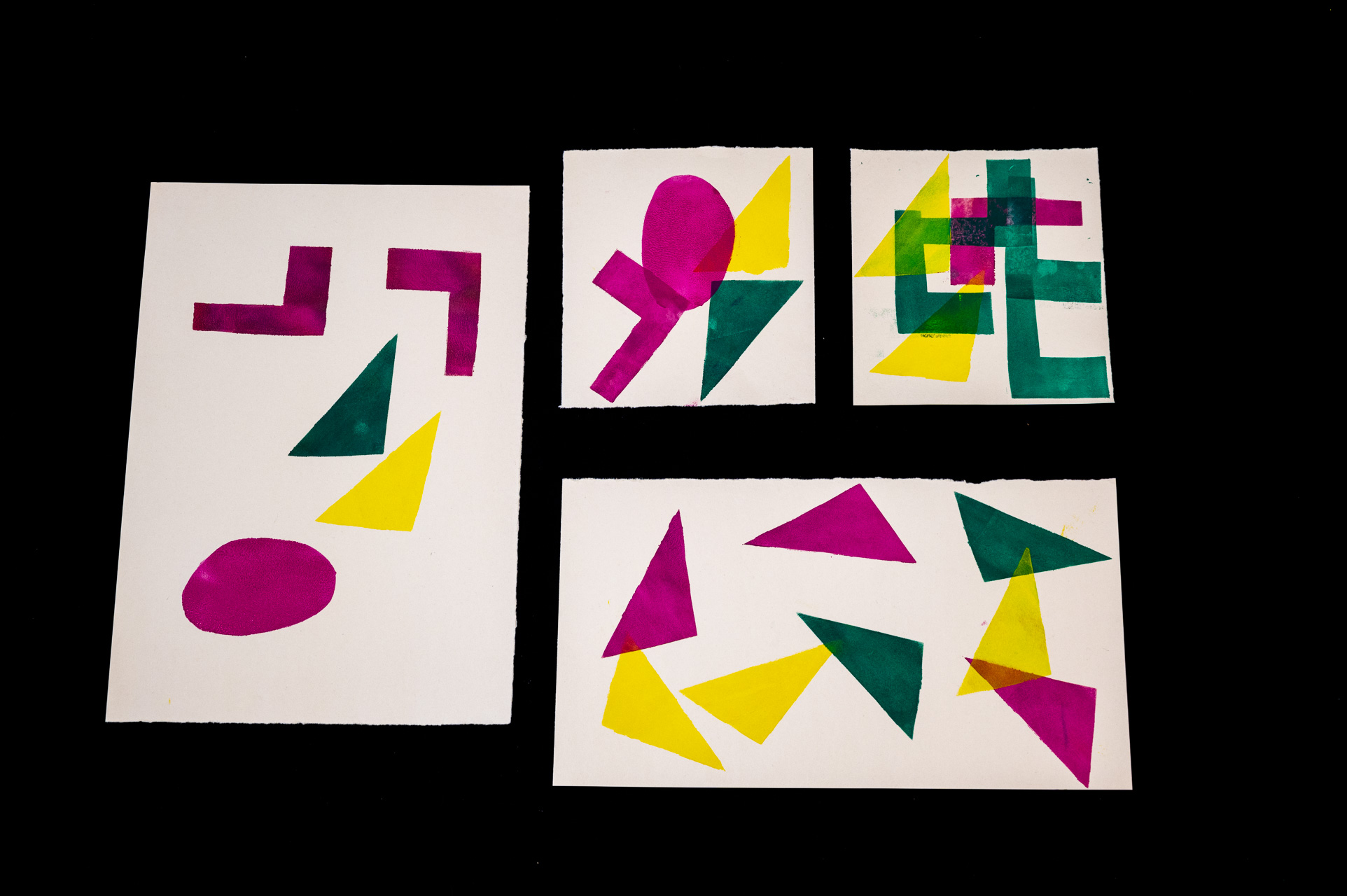
6. Make your wall labels. A wall label is a piece of cardboard, like a card, listing the title of the piece, the year it was done, and the name of the artist. If you made your piece with someone else, write down both names. Wall labels are usually placed next to the pieces.
7. You're ready to go! Now you can have an opening and invite your friends and family!
Materials: card stock or rigid cardboard that isn't too thick, pencil, scissors, masking tape, rollers, liquid paints.
Related exhibitions:
Follow this activity on social media
Online activity
Suggested ages
Activity for all ages

